Mathematician. Leader. Heroine. Remembering Hidden Figure Katherine Johnson
Mathematician. Leader. Heroine. Remembering Hidden Figure Katherine Johnson
Tonight, count the stars and remember a trailblazer.

We're saddened by the passing of celebrated #HiddenFigures mathematician Katherine Johnson. She passed away at 101 years old.

An America hero, Johnson's legacy of excellence broke down racial and social barriers while helping get our space agency off the ground.

Once a "human computer", she famously calculated the flight trajectory for Alan Shepard, the first American in space.

And when we began to use electronic computers for calculations, astronaut John Glenn said that he’d trust the computers only after Johnson personally checked the math.

As a girl, Katherine Johnson counted everything. As a mathematician, her calculations proved critical to our early successes in space travel.

With slide rules and pencils, Katherine Johnson’s brilliant mind helped launch our nation into space. No longer a Hidden Figure, her bravery and commitment to excellence leaves an eternal legacy for us all.
"We will always have STEM with us. Some things will drop out of the public eye and will go away, but there will always be science, engineering and technology. And there will always, always be mathematics." - Katherine Johnson 1918 -2020
May she rest in peace, and may her powerful legacy inspire generations to come! What does Katherine Johnson’s legacy mean to you? Share in the comments.
Make sure to follow us on Tumblr for your regular dose of space: http://nasa.tumblr.com
More Posts from Nasa and Others
Hello! I am an avid lover of the cosmos and all things too grand for our minds to grasp. I was wondering, honestly, how do you cope with the pressure of your jobs, or say the scale of what is on your shoulders? It's quite an impressive thing you do, and it just gets me curious as to how you deal with the expectations that come with this type of job? Like, when you go home at night and eat your dinner, go to bed, do you have to practice mindfulness? Thanks for answering these! Love you guys!!!

A magnetic power struggle of galactic proportions - new research highlights the role of the Sun’s magnetic landscape in the development of solar eruptions that can trigger space weather events around Earth.
Using data from our Solar Dynamics Observatory, scientists examined an October 2014 Jupiter-sized sunspot group, an area of complex magnetic fields, often the site of solar activity. This was the biggest group in the past two solar cycles and a highly active region. Though conditions seemed ripe for an eruption, the region never produced a major coronal mass ejection (CME) - a massive, bubble-shaped eruption of solar material and magnetic field - on its journey across the Sun. It did, however, emit a powerful X-class flare, the most intense class of flares. What determines, the scientists wondered, whether a flare is associated with a CME?
The scientists found that a magnetic cage physically prevented a CME from erupting that day. Just hours before the flare, the sunspot’s natural rotation contorted the magnetic rope and it grew increasingly twisted and unstable, like a tightly coiled rubber band.
Credits: Tahar Amari et al./Center for Theoretical Physics/École Polytechnique/NASA Goddard/Joy Ng
Make sure to follow us on Tumblr for your regular dose of space: http://nasa.tumblr.com.
Asteroid Bennu, the Storyteller
Asteroids are the storytellers of our solar system’s youth. They are the closest we can get to the original material that makes up the sun, planets, and moons.
This week, our OSIRIS-REx spacecraft made history when it touched a pristine, ancient asteroid named Bennu to collect a sample from the surface. The intrepid spacecraft will now bring the asteroid sample – and its stories – back home to Earth.
Why is it that asteroid Bennu holds the history of our origins? Let’s go back to the beginning...

About 4.5 billion years ago, our solar system began as a spinning, swirling cloud made up of tiny bits of gaseous and rocky material. Most of that material – more than 99% of it – gathered in the center and went on to become the Sun.

The leftovers began to spin around the Sun, colliding into one another and forming larger and larger objects, eventually becoming planets, dwarf planets, and moons.

But asteroids didn't become part of planets or moons. So, while the material in planets and moons were superheated and altered during the formation of the solar system and weathered by geologic processes over time, asteroids remained pristine.

Each asteroid holds knowledge from that special time in our solar system’s history. Each one contains information about the chemicals, minerals, and molecules that were present when the solar system was just starting to form.

With missions like OSIRIS-REx, we are going on a journey to these ancient worlds, seeking to learn what they remember, seeking to expand our knowledge, and deepen our understanding of our origins.

Learn more about the OSIRIS-REx mission HERE, or follow the mission on Facebook, Twitter and Instagram.
Make sure to follow us on Tumblr for your regular dose of space: http://nasa.tumblr.com
Solar System: 5 Things To Know This Week
Our solar system is huge, so let us break it down for you. Here are 5 things you should know this week:
1. From Pluto, with Love

Last Valentine’s Day, no one had even seen Pluto’s most famous feature, the heart-shaped Sputnik Planum. These days, the New Horizons spacecraft is sending more and more pictures back to Earth from its Pluto flyby last July. We received new ones almost on a weekly basis. For the latest love from the outer solar system, go HERE.
2. Saturn’s Rings: More (and Less) than Meets the Eye

The Cassini spacecraft is executing a series of maneuvers to raise its orbit above the plane of Saturn’s famous rings. This will offer some breathtaking views that you won’t want to miss. Meanwhile, Cassini scientists are learning surprising things, such as the fact that the most opaque sections of the rings are not necessarily the thickest.
3. Stay on Target

The Juno spacecraft recently completed a course correction maneuver to fine-tune its approach to Jupiter. After years of flight and millions of miles crossed, arrival time is now set to the minute: July 4th at 11:18 p.m. EST. See why we’re going to jupiter HERE.
4. The Many Lives of “Planet X”

The announcement of a potential new planet beyond Neptune creates an opportunity to look back at the ongoing search for new worlds in the unmapped reaches of our own solar system. Review what we’ve found so far, and what else might be out there HERE.
5. Answering the Call of Europa

There are a few places more intriguing that Jupiter’s icy moon, Europa, home to an underground ocean with all the ingredients necessary for potential life. We’re undertaking a new mission to investigate, and the project’s top manager and scientist will be giving a live lecture to detail their plans. Join Barry Goldstein and Bob Pappalardo on Feb. 11 at 10 p.m. EST for a live lecture series on Ustream.
Want to learn more? Read our full list of the 10 things to know this week HERE.
Make sure to follow us on Tumblr for your regular dose of space: http://nasa.tumblr.com
How exactly will it work? And whats the goal of the project?
Why are bacteria resistant polymers being experimented, specifically in microgravity?
The United Launch Alliance’s Atlas V rocket carrying the Orbital ATK Cygnus module rolls to Cape Canaveral Air Force Station's Launch Pad 41 in this time-lapse video. The rollout is in preparation for the Orbital ATK CRS-7 mission to deliver supplies to the International Space Station.
Launch is currently scheduled for 11:11 a.m. EDT, watch live coverage: http://www.nasa.gov/live
Make sure to follow us on Tumblr for your regular dose of space: http://nasa.tumblr.com
Are you scared about going up into space?
I’m not scared, but I have a healthy amount of nervousness because I don’t know exactly what to expect. I have a lot of great advice, but you don’t know until you actually get there.
As an astronaut who has been on a spacewalk before, what does the all-woman spacewalk mean to you?
Space Gardening 101
You can’t escape eating (or gardening!) your vegetables, even if you’re in space. On Aug. 10, astronauts on the International Space Station sampled their first space grown salad. This freshly harvest red romaine lettuce was grown in the “Veggie” plant growth chamber that is designed to make gardens flourish in weightlessness.
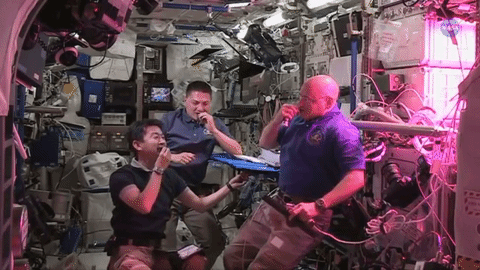
In a weightless environment, there is no up and down, so roots grow in all directions. Water and soil, the materials used to anchor these plants and allow for root growth tend to float away.
How Do We Grow Plants in Space?
1. Plant Pillows
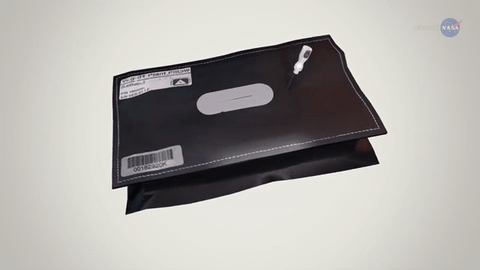
The Veggie chamber helps solve the problems of a weightless environment by using ‘plant pillows’, sounds comfy right? These pillows are bags filled with material for growing plants in space.
2. Wicks

Wicks are implanted into the bags and are used to draw water from inside the pillow to the plant.
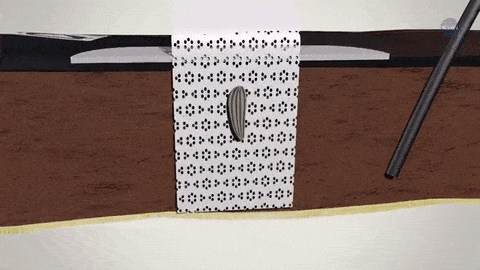
These wicks also provide a place to glue the seeds. It’s important to orient the seeds so roots will grow ‘down’, and shoots that emerge will push out of the bag.
3. LED Lights
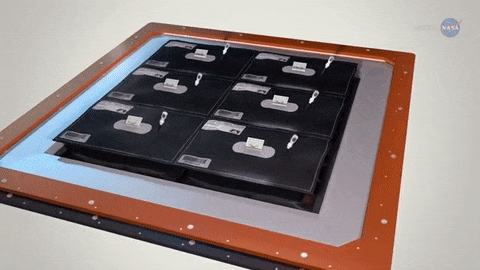
LED lights are used for photosynthesis and give the shoots a sense of direction so they keep growing upward. The walls of the Veggie chamber can expand to make room for the plant as it grows.
The purple/pinkish hue surrounding the plants in Veggie is the result of a combination of the red and blue lights, which is what the plants need to grow. Green LEDS were added so the plants look like edible food rather than weird purple plants.
Why are we growing plants in space?
When astronauts travel on deep space missions, like Mars, they will need to be self-sufficient for long periods of time. Having the ability to grow their own food is a big step in that direction. There is also a desire to grow flowering vegetables in space, which is why we are currently tending to zinnia flowers on orbit. Growing these flowering plants will help us understand longer duration growing plants that have to flower in space, such as tomatoes.
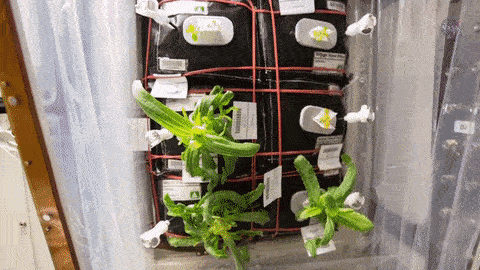
What’s Next? The next SpaceX delivery will include seeds for a small cabbage and additional red romaine lettuce. Upcoming experiments will use various ratios of red and blue lights and different fertilizers in attempts to improve crop yield, nutrition and flavor. The findings from these experiments can be utilized both on Earth and in space.
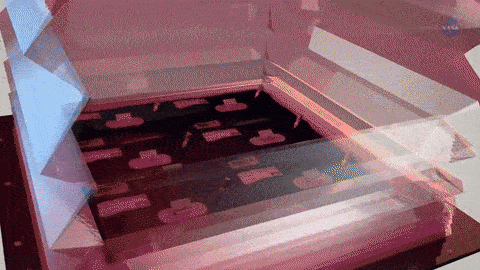
In addition to the nutrition benefits of growing vegetables in space, the psychological benefits are also significant. Having living plants can help with stress and increase the crews’ enjoyment. It provides the sights, smells and tastes of Earth.
To learn more about gardening in space, watch ScienceCast HERE.
Make sure to follow us on Tumblr for your regular dose of space: http://nasa.tumblr.com
-
 sonicjaxx reblogged this · 1 month ago
sonicjaxx reblogged this · 1 month ago -
 sonicjaxx liked this · 1 month ago
sonicjaxx liked this · 1 month ago -
 lartdumond reblogged this · 2 months ago
lartdumond reblogged this · 2 months ago -
 i-would-like-to-leave liked this · 2 months ago
i-would-like-to-leave liked this · 2 months ago -
 lastofthelovesongs reblogged this · 4 months ago
lastofthelovesongs reblogged this · 4 months ago -
 mojomatao reblogged this · 4 months ago
mojomatao reblogged this · 4 months ago -
 marluc-file liked this · 6 months ago
marluc-file liked this · 6 months ago -
 nothingtoseemoveon liked this · 6 months ago
nothingtoseemoveon liked this · 6 months ago -
 joisacrow liked this · 6 months ago
joisacrow liked this · 6 months ago -
 all-the-beautiful-chaos liked this · 8 months ago
all-the-beautiful-chaos liked this · 8 months ago -
 i-lived-bitxh liked this · 10 months ago
i-lived-bitxh liked this · 10 months ago -
 lysluna liked this · 11 months ago
lysluna liked this · 11 months ago -
 ereinii0n liked this · 11 months ago
ereinii0n liked this · 11 months ago -
 mx-butterscotch liked this · 1 year ago
mx-butterscotch liked this · 1 year ago -
 redscout24 liked this · 1 year ago
redscout24 liked this · 1 year ago -
 thelunarguide liked this · 1 year ago
thelunarguide liked this · 1 year ago -
 fluffyyymocha reblogged this · 1 year ago
fluffyyymocha reblogged this · 1 year ago -
 fluffyyymocha liked this · 1 year ago
fluffyyymocha liked this · 1 year ago -
 theguiltynova liked this · 1 year ago
theguiltynova liked this · 1 year ago -
 haudcsl reblogged this · 1 year ago
haudcsl reblogged this · 1 year ago -
 annabellzellowed-blog liked this · 1 year ago
annabellzellowed-blog liked this · 1 year ago -
 ayaaauuu liked this · 1 year ago
ayaaauuu liked this · 1 year ago -
 sunfishsquid17 liked this · 1 year ago
sunfishsquid17 liked this · 1 year ago -
 beepbing liked this · 1 year ago
beepbing liked this · 1 year ago -
 acidenrechi liked this · 1 year ago
acidenrechi liked this · 1 year ago -
 ahhhhhghh liked this · 1 year ago
ahhhhhghh liked this · 1 year ago -
 korucomics liked this · 1 year ago
korucomics liked this · 1 year ago -
 cuijohntwinra liked this · 1 year ago
cuijohntwinra liked this · 1 year ago -
 reedthephcknmanual liked this · 1 year ago
reedthephcknmanual liked this · 1 year ago -
 phantasm-27 reblogged this · 1 year ago
phantasm-27 reblogged this · 1 year ago -
 phantasm-27 liked this · 1 year ago
phantasm-27 liked this · 1 year ago -
 gracelessmoose liked this · 1 year ago
gracelessmoose liked this · 1 year ago -
 moggybuddy liked this · 1 year ago
moggybuddy liked this · 1 year ago
Explore the universe and discover our home planet with the official NASA Tumblr account
1K posts